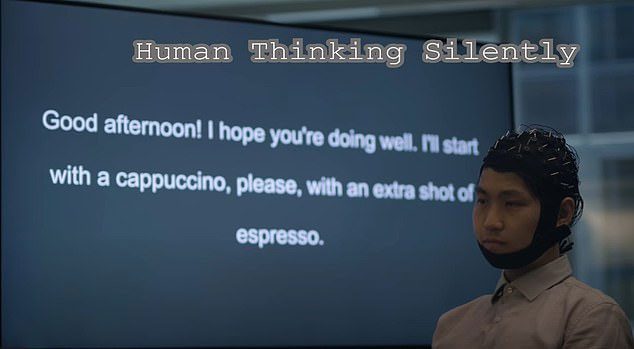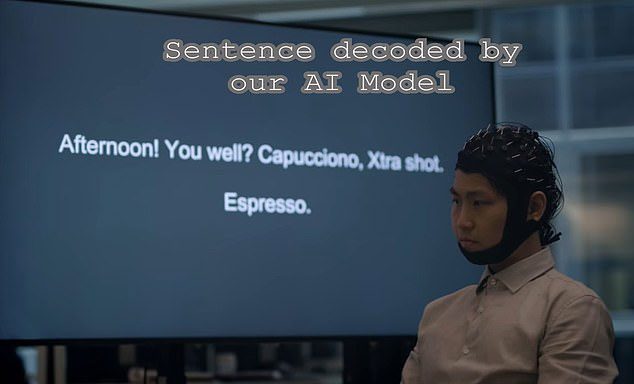Scientists have developed the world’s first artificial intelligence (AI) algorithm that can read human thoughts and translate brainwaves into text.
According to the Daily Mail, this AI algorithm works by using a helmet equipped with sensors to analyze specific electrical activity in the human brain as a person thinks, subsequently converting those thoughts into text.

A participant in the experiment thinking about the text displayed on the screen. (Photo: Daily Mail).

The screen then displays content decoded by the AI model – and the results are almost perfectly aligned. (Photo: Daily Mail).
This groundbreaking technology is led by a research team at the University of Technology Sydney. Scientists believe this new invention could revolutionize care for patients who are mute due to strokes or paralysis.
The research team also believes that the new device will enable seamless control of devices such as prosthetic limbs and robots, allowing individuals to give commands simply by thinking about them.
Professor CT Lin, the lead researcher, stated: “This research represents a pioneering effort to decode raw EEG waves directly into language, marking a significant breakthrough in this field. It is the first time we have combined discrete coding techniques in the process of translating brain signals into text, introducing an innovative approach to neural decoding. Integration with language models is also opening new frontiers in neuroscience and AI.”
Previously, technology for decoding brain signals into language required scientists to perform surgeries to implant electrodes into the human brain or use MRI scans. These technologies are complex, expensive, and difficult to implement in everyday life. However, the new technology only requires a simple helmet worn on the head to read a person’s thoughts.
To test the accuracy of this technology, Professor Lin and his team conducted experiments with 29 participants. These individuals read a text displayed on the screen and thought about the content of that text. The AI model then analyzed and displayed the data read from the participants’ brainwaves as text. The results showed that the content decoded by the AI was almost perfectly aligned with human thoughts.
The research team noted that the current accuracy of the decoded text is around 40%. Scientists are working to raise this figure to 90%.


















































